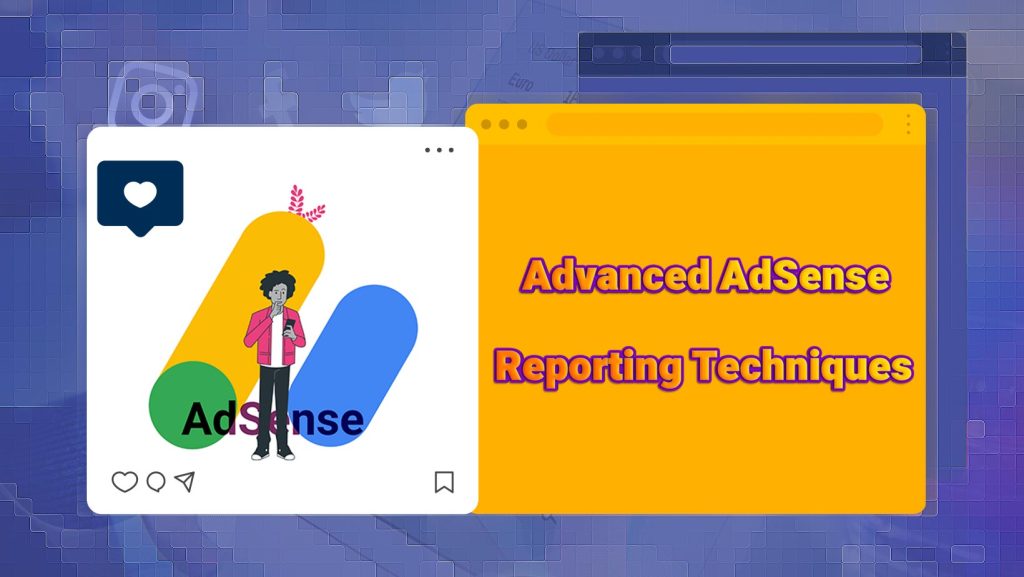AdSense is about more than just getting revenue! It is also about learning and analyzing the reporting techniques to enhance your activity on this platform.
While AdSense provides a wealth of information, navigating all the reporting metrics can be overwhelming – over 100 data points waiting to be discovered!
On this page, we try to help the app developers and publishers decode these reporting metrics and transform those numbers into actionable insights.
We will break down these essential metrics for you, showing you exactly what they mean and how to use them to boost your AdSense earnings.
From clicks and impressions to revenue per mile (RPM) and cost-per-click (CPC), we will add tips to optimize your ad placements, identify high-performing content, and enhance your app’s presence on this platform.
Let’s not make you wait more and start the topic, as it can be one of the most essential guides related to the AdSense tools.
Advanced AdSense Reporting Techniques for Publishers
Let’s explain some of the essential AdSense reporting metrics. We all acknowledge that understanding your AdSense reports is like having an upper hand in your monetization process. But with so many numbers on the table, it’s easy to feel lost.
If you want to master the AdSense reporting techniques, just go through the following section as we are breaking down the most essential AdSense reports and metrics you need to know.
![]() 12 Advanced AdSense reporting techniques:
12 Advanced AdSense reporting techniques:
1. Estimated Earnings
The first one we mention here is the golden metric, reflecting the money you’re projected to make from your AdSense ads. But remember that it’s an estimate – actual earnings may vary.
2. Page Views
This AdSense metric shows and tracks the number of times a page on your website loads, with or without ads displayed. It helps you understand your overall website traffic.

3. Page RPM (revenue per mille)
Analyzing this AdSense metric tells you how much you earn (on average) for every 1,000 page views where an ad is shown. It’s a fantastic indicator of your overall ad unit performance.
4. Impressions
the other important metric you need to keep an eye on is the impressions. An impression is counted each time an ad appears on your website, regardless of whether someone clicks. It reflects the visibility of your ads.
5. Impression RPM (revenue per mille)
Just like the “Page RPM,” but based on impressions instead of page views. This isolates the earning potential of your ad placements themselves.
If you want complete information about “What Is Ad Session RPM In AdSense?” check this article, which mentions some of the best tips for this AdSense reporting technique.
6. Clicks
The other essential AdSense metric worth analyzing is clicks, which tracks the number of times users click on your ads.
Understanding user engagement with your advertising is essential, and it helps you reconsider your AdSense strategies.
7. CTR (click-through rate)
An ad’s click-through rate is the proportion of individuals who see it. More money from ads means a better CTR.
If you seek strategies for improving AdSense CTR, you can read this guide to find the best methods to analyze and enhance your CTR on AdSense.

8. Active View Viewable
Active View Viewable applies to impressions from standard AdSense for content, video, and games ad units.
However, it excludes data from link units or dynamic allocation within Google Ad Manager. This ensures you clearly understand how users interact with your directly placed ads.
By analyzing the Active View Viewable, one of the critical AdSense reporting metrics, you can make informed decisions about ad placement content strategy and optimize your ad revenue.
9. CPC (cost per click)
You can also see how much money you make every time someone clicks on your ad using AdSense’s cost-per-click (CPC) reporting feature.
Now, if you are wondering how it is helpful to understand how CPC helps developers optimize their ad settings for better profitability.
10.Coverage
This AdSense metric shows the percentage of ad requests that displayed an ad. A low coverage might indicate issues with ad delivery or a need for more relevant ads for your content.
You can optimize AdSense revenue with reporting like coverage as it reveals some problems in your ads display.
11.Page Views Per Ad Session
This AdSense reporting technique helps the developers understand user engagement with your content alongside the ads. Page viewers per ad session tell you how many pages a user typically views during a single visit with ads displayed.
12.Ad Session Duration
Last, we have ad session duration, which tracks the average time users spend on your website during a session with ads displayed.
This essential metric provides insights into user behaviour and content effectiveness.
These are just some of the most critical metrics used to report advanced AdSense reporting techniques for all the developers.
To survive on AdSense and enhance your revenue, keep an eye on all of them and try to make changes to your AdSense strategies based on the analyses you get, checking them to make informed decisions.
Essential AdSense Report Types: How Many Report Types Do We Have?
AdSense goes beyond just a basic earnings overview. To access other types of AdSense reporting, you need to check your account’s AdSense dashboard. There is a wealth of valuable information waiting to be discovered.
![]() Here, you can find some of the most crucial report types for dissecting your AdSense data:
Here, you can find some of the most crucial report types for dissecting your AdSense data:
- Reports on Sites, Platforms, Countries, and Ad units give you a view of your ad performance.
- Analyze the effectiveness of different ad formats with reports on ad sizes and creatives that are served.
- Use the Custom and URL channels to track the performance of specific ad campaigns or analyze how different sections of your website perform with ads.
- Charts and the ability to compare different Timeframes make it easy to spot trends and identify areas for improvement.
Now that you know some advanced AdSense reporting techniques, it is time to conclude.
Recap
You have now cracked the code on the essential metrics and report breakdowns within the AdSense dashboard.
Remember that consistent analysis and optimization are crucial to maximizing your revenue potential. Regularly revisit your reports, track trends, and experiment with different ad settings based on your insights.
Do you have any questions about specific AdSense reporting metrics or techniques? We are here to help you, so feel free to comment below, and we’ll do our best to address your queries.


